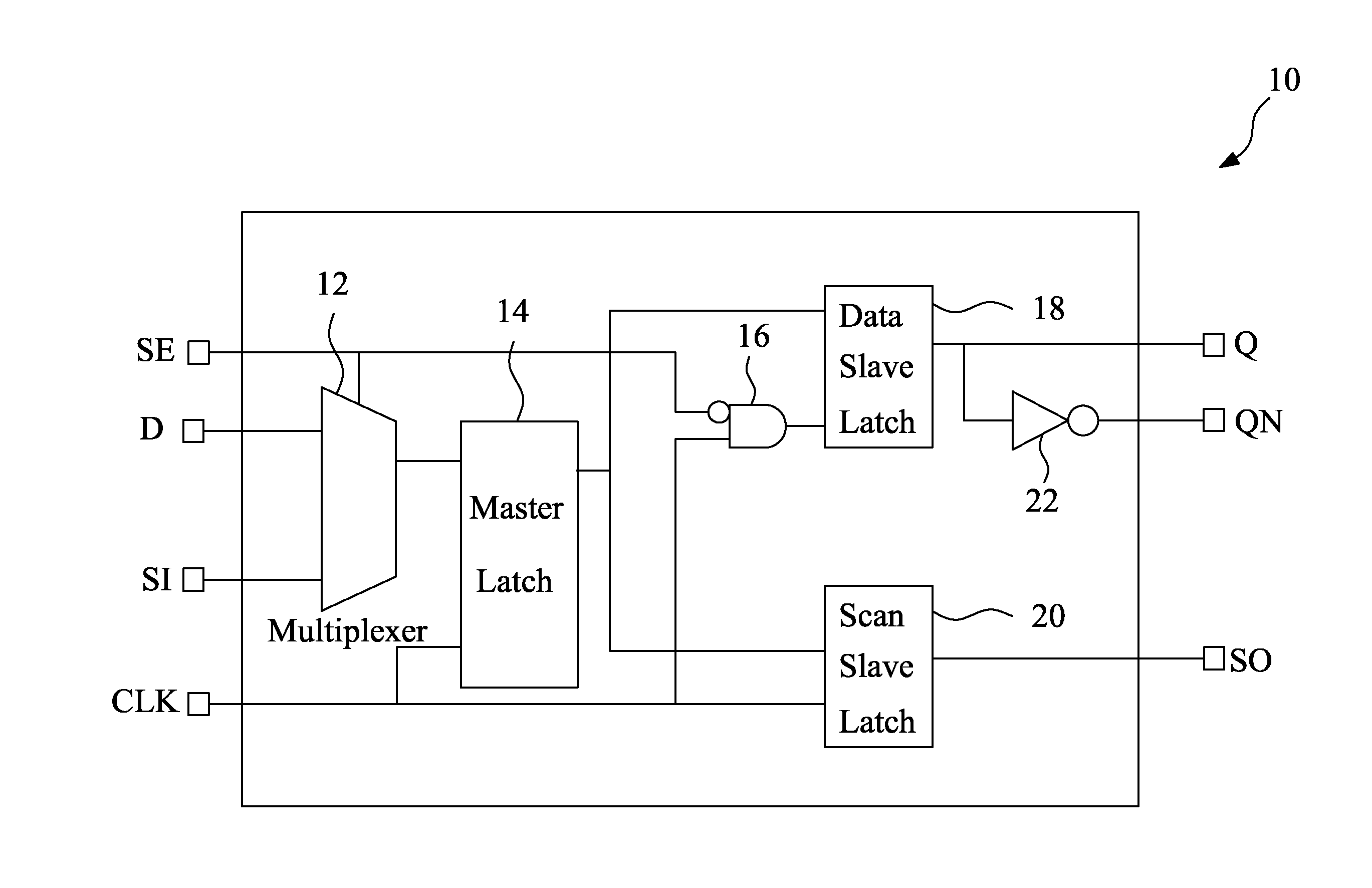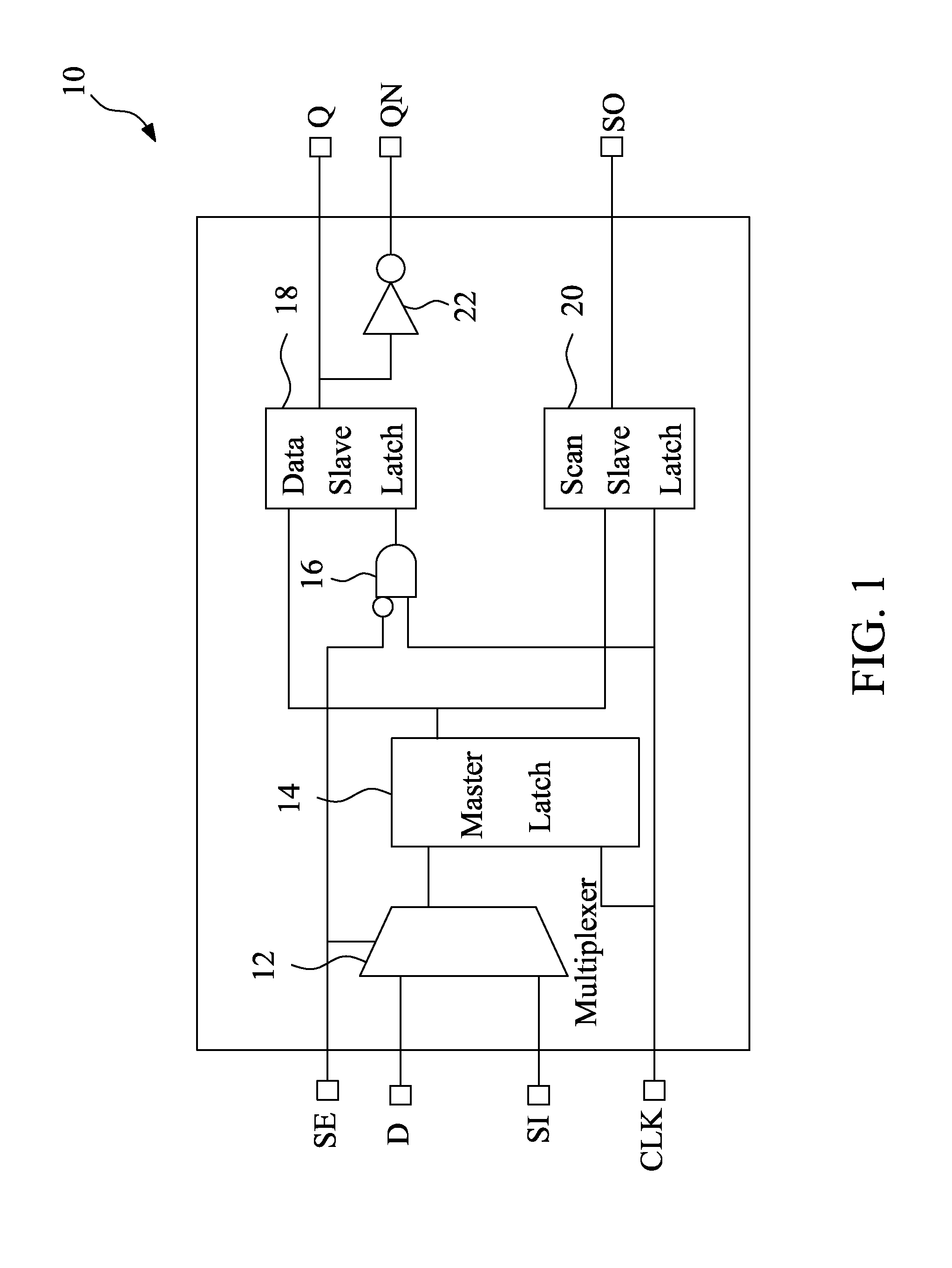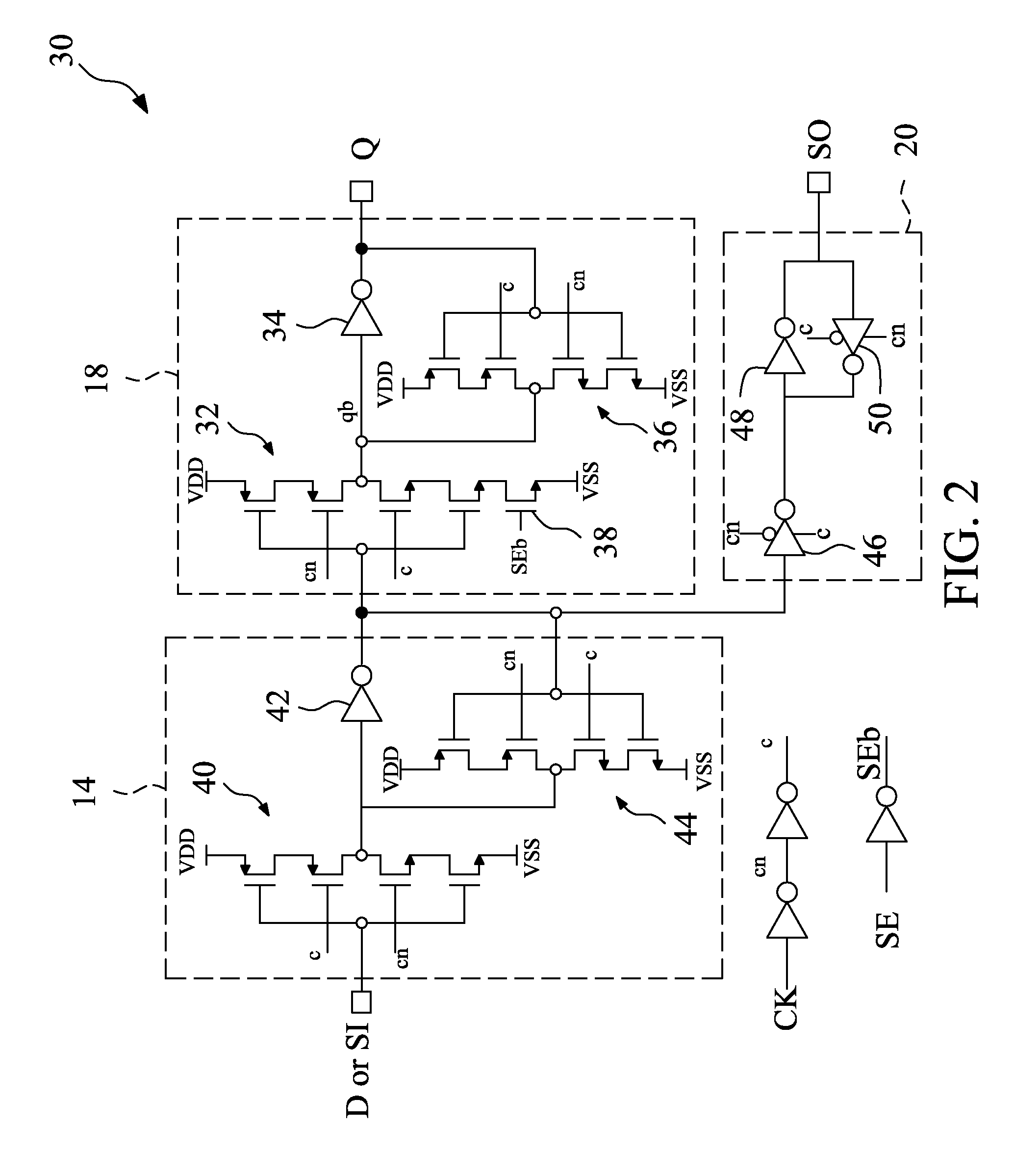Low power scan flip-flop cell
a flip-flop cell, low-power scanning technology, applied in the direction of electronic circuit testing, measurement devices, instruments, etc., can solve the problems of high power consumption, high power consumption may exceed the circuit's power rating, and high power consumption may be much greater, so as to reduce unnecessary power consumption and eliminate unnecessary switching
- Summary
- Abstract
- Description
- Claims
- Application Information
AI Technical Summary
Benefits of technology
Problems solved by technology
Method used
Image
Examples
first embodiment
[0018]Referring now to FIG. 1, a schematic block diagram of a low power scan flip-flop cell 10 in accordance with the present invention is shown. The scan flip-flop cell 10 includes a multiplexer 12, a master latch 14, a first logic gate 16, a data slave latch 18, a scan slave latch 20, and a second logic gate 22.
[0019]The multiplexer 12 receives as inputs a data input (D) signal and a scan input (SI) signal, and outputs a first data signal depending on a scan enable (SE) input signal. The master latch 14 is connected to the multiplexer 12 and receives the first data signal at a data input and a clock signal (CLK) at a clock input, and outputs a first latch signal. The scan slave latch 20 is connected to the master latch 14, and receives the first latch signal at a data input and generates a scan output (SO) signal. The CLK signal also is input to the scan slave latch 20 at its clock input.
[0020]In this embodiment, the first logic gate 16 comprises an AND gate that receives as input...
second embodiment
[0031]Referring to FIG. 4b, when the scan flip-flop cell 30′ is in scan mode, the SE signal is at logic high and the inverted scan enable (SEb) signal is at logic low. Therefore, the second transistor 52 is switched on. The signal “qb” at the first connection node goes high during scan shift so as to keep the Q output signal at a logic low state. However, when the scan flip-flop cell 30′ is in functional mode, the second transistor 52 is switched off and so does not hold the “qb” signal high. Meanwhile, as discussed above with reference to the second embodiment, the first transistor 38 is switched on and the first tri-state inverter 32 operates under the control of the clock signal during the functional mode. Therefore, the data slave latch 18′ will output the Q and QN signals based on the first latch signal from the master latch 14 and the clock signal.
fourth embodiment
[0032]FIG. 5 is a schematic circuit diagram of a low power scan flip-flop cell 54 in accordance with the present invention. The scan flip-flop cell 54 includes a multiplexer (not shown), a master latch 14, a data slave latch 58, and a scan slave latch 60. In this embodiment, the master latch 14 is similar to the master latch 14 shown in FIGS. 2 and 3, so a detailed description thereof is not repeated.
[0033]The data slave latch 58 includes a first transmission gate 62, a fourth normal inverter 64 and a seventh tri-state inverter 66. The fourth normal inverter 64 and seventh tri-state inverter 66 are connected in a loop. The first transmission gate 62 receives the first latch signal from the master latch 14 as an input and has an output connected to a first connection node (QN) located between an input of the fourth normal inverter 64 and an output of the seventh tri-state inverter 66. The Q output is generated at a second connection node located between an output of the fourth normal...
PUM
 Login to View More
Login to View More Abstract
Description
Claims
Application Information
 Login to View More
Login to View More - R&D
- Intellectual Property
- Life Sciences
- Materials
- Tech Scout
- Unparalleled Data Quality
- Higher Quality Content
- 60% Fewer Hallucinations
Browse by: Latest US Patents, China's latest patents, Technical Efficacy Thesaurus, Application Domain, Technology Topic, Popular Technical Reports.
© 2025 PatSnap. All rights reserved.Legal|Privacy policy|Modern Slavery Act Transparency Statement|Sitemap|About US| Contact US: help@patsnap.com



